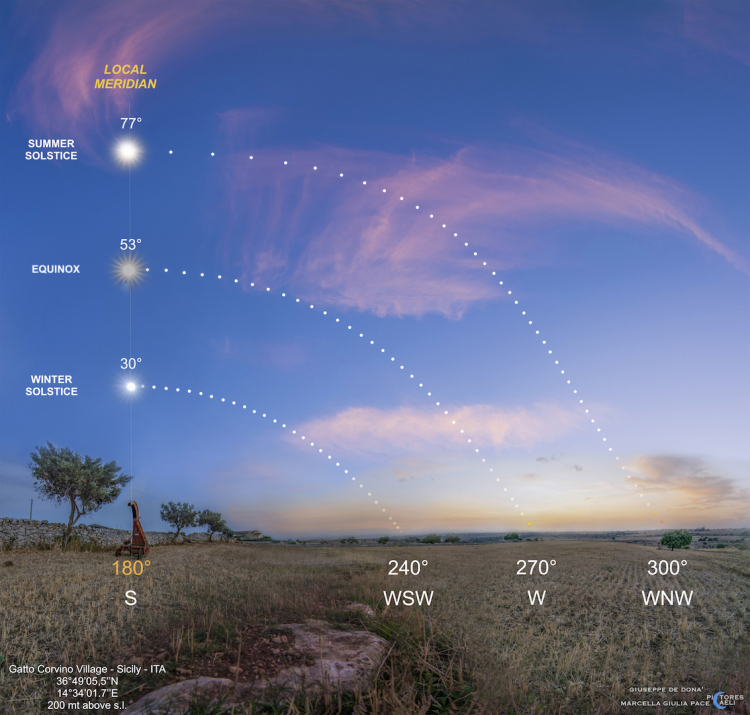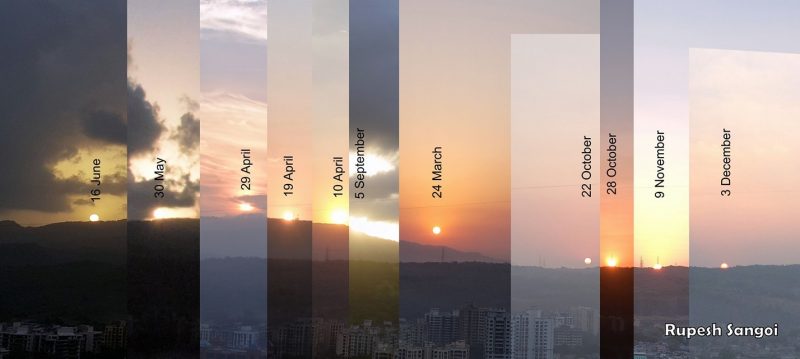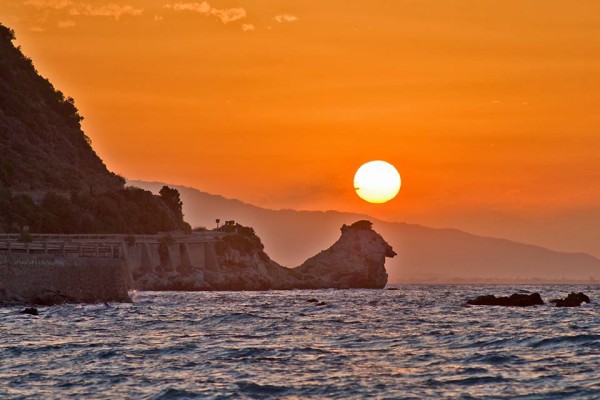
The 2023 June solstice falls at 14:58 UTC (9:58 a.m. CDT) today, Wednesday, June 21.
Northern Hemisphere summer
The June solstice marks the year’s northernmost sunset and sunrise. It brings the year’s longest period of daylight to the Northern Hemisphere (least daylight in the Southern Hemisphere). North of the Arctic Circle, the sun neither rises nor sets but stays above the horizon continuously, around the clock.
In the Northern Hemisphere, noontime shadows are shortest at this solstice. It’s the year’s highest sun, as seen from the Tropic of Cancer and all places north.
For us in the Northern Hemisphere, the June solstice signals the beginning of summer. For the Southern Hemisphere, winter starts at this solstice.
The solstice is a whole-Earth event. It happens at the same instant for all of us – the instant the sun reaches its northernmost point in our sky – an instant that’s the same for everyone on Earth. But our clocks say different times.

Southern Hemisphere winter
Earth’s orbit around the sun – and tilt on its axis – have brought us to a place in space where our world’s Northern Hemisphere has its time of greatest daylight: its longest day and shortest night. Meanwhile, the June solstice and northernmost sun brings the shortest day and longest night south of the equator.
This solstice marks the beginning of Southern Hemisphere winter.
It marks the lowest sun and longest noontime shadow for those on the southern part of Earth’s globe.
South of the Antarctic circle, the sun neither rises nor sets but stays beneath the horizon for 24 hours.

Northernmost sunset, but not latest sunset
The sun sets farthest north on the day of the solstice, bringing the longest day for the Northern Hemisphere. But this summer solstice doesn’t bring the latest sunset. And it doesn’t bring the earliest sunrise. The exact dates vary with latitude, but the sequence is always the same: earliest sunrise before the summer solstice, longest day on the summer solstice, latest sunset after the summer solstice.
For the Southern Hemisphere, where it’s winter now, the latest sunrise – and earliest sunrise – don’t come on the day of the solstice either. Again, the exact dates vary with latitude. But the sequence is always the same: earliest sunset before the winter solstice, shortest day on the winter solstice, latest sunrise after the winter solstice.
Each solstice marks a turning of the year.
Even as this northern summer begins with the solstice, throughout the world the solstice also represents a “turning” of the year.
In fact, to many cultures, the solstice can mean a limit or a culmination of something. From around the world, the sun is now setting and rising as far north as it ever does. The solstice marks when the sun reaches its northernmost point for the year.
Then after the June solstice, the sun will begin its subtle shift southward on the sky’s dome again. Thus even in summer’s beginning, we find the seeds of summer’s end.
Read more: All you need to know about June solstice 2023

Bottom line: The northernmost sunset (and sunrise) happens at the June solstice. Here’s some quick info that’ll help you connect with nature on this special day.
Help support EarthSky! Check out the EarthSky store for fun astronomy gifts and tools for all ages!











